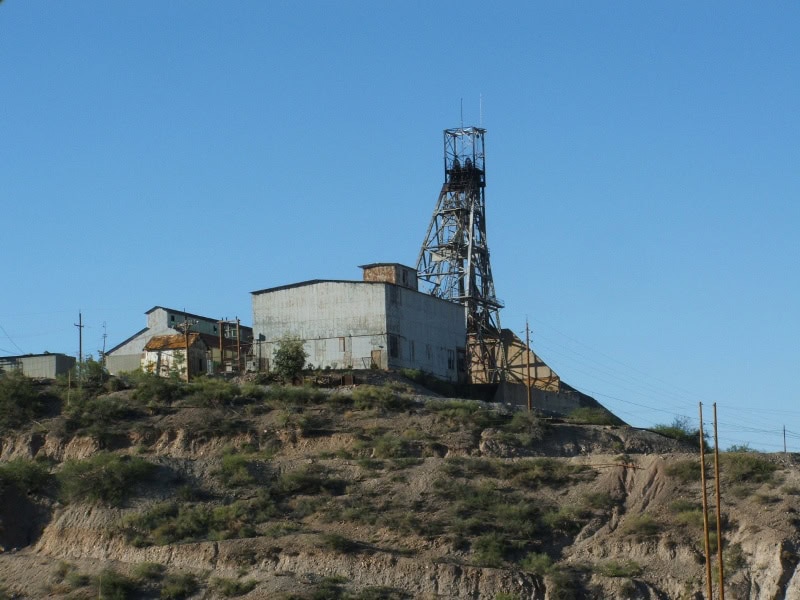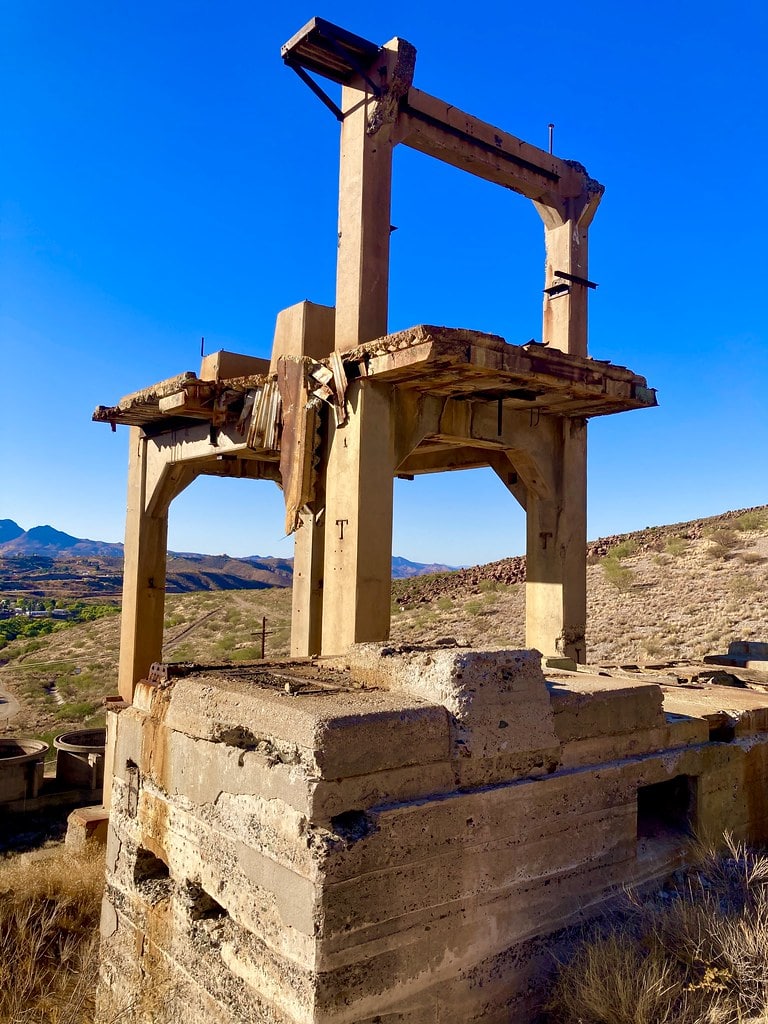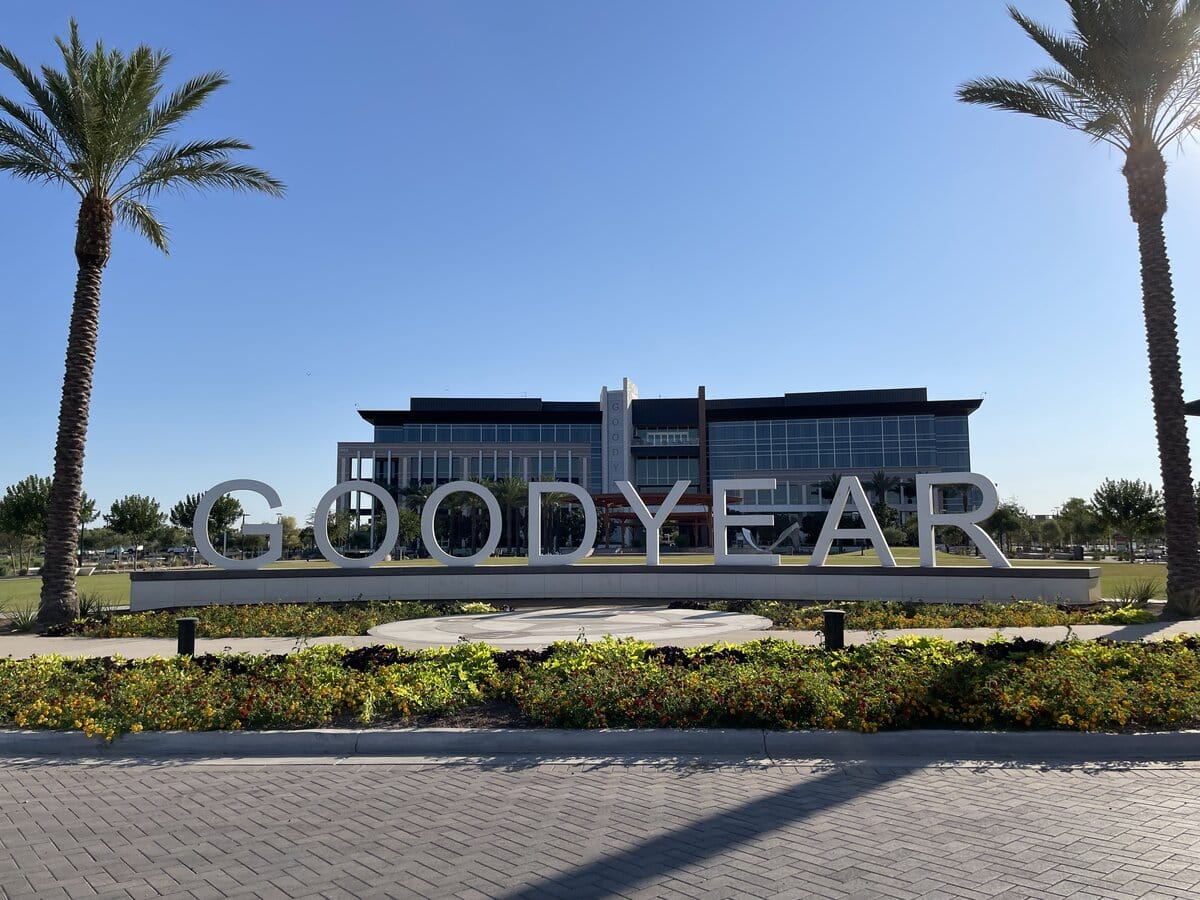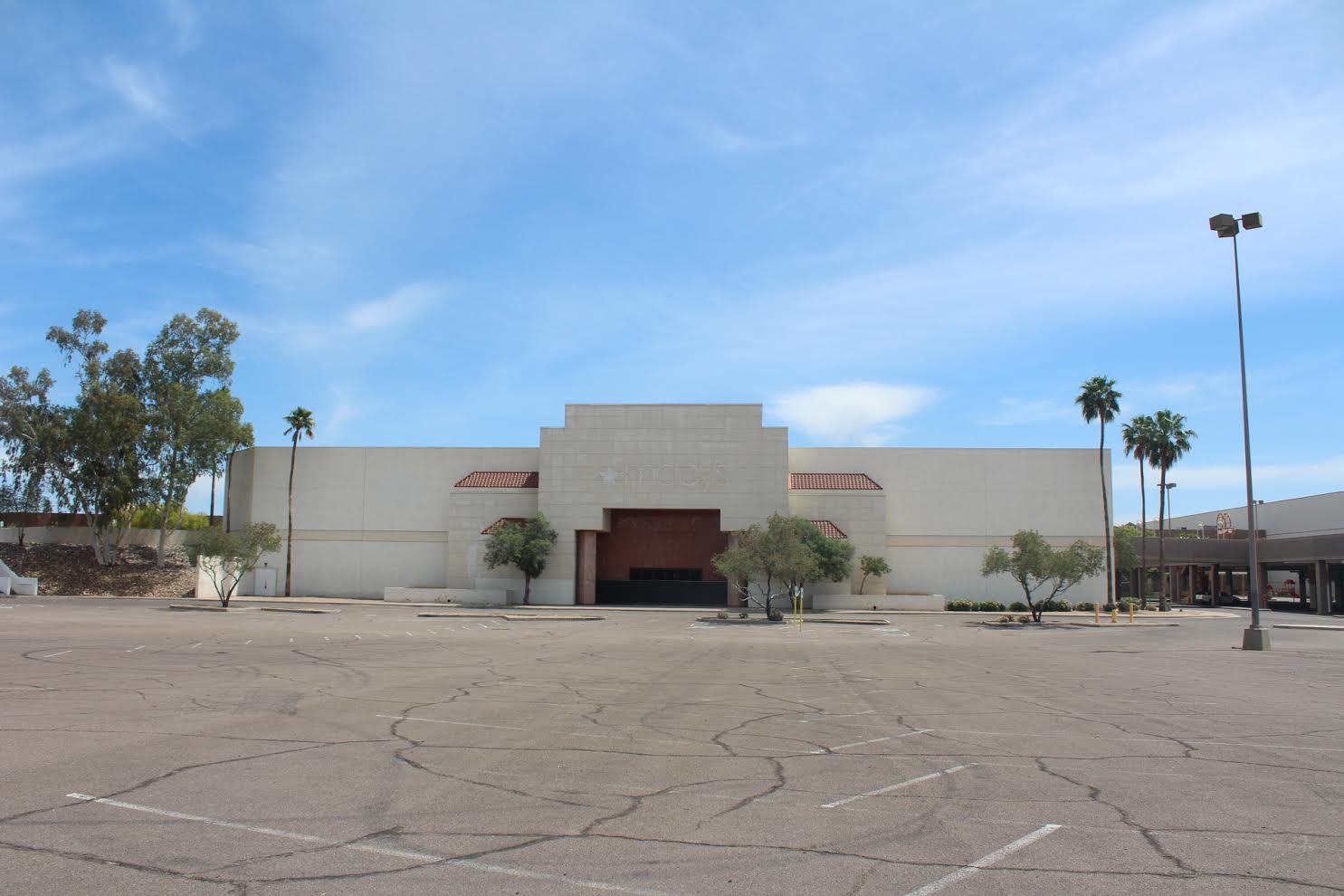Copper in the Desert
At the edge of Globe, Arizona, where the desert begins to fold into the Pinal Mountains, the earth once gave up vast seams of copper. It was here, in 1880, that the Old Dominion Mine took shape.
In those years, Globe was little more than a rugged settlement, its streets dusty, its houses temporary. But the mine drew people in droves.
Prospectors staked claims, railroads pushed closer, and soon Globe was a town built around the rhythms of copper.
Smoke from the smelters became as much a part of the landscape as the red rock and creosote.
Life here was not easy, but it was defined by the mine. Families relied on the Old Dominion payroll for food, rent, and schooling.
The company supplied electricity and jobs, but it also decided when operations shut down, when wages fell, and when men would be sent underground.
Globe's fate was bound to the rise and fall of copper markets far away.
Years of Fortune and Disaster
For a decade, the mine thrived, producing some of the richest copper ore in the Arizona Territory.
Investors boasted that Globe had a future secured by its mineral wealth. But copper towns have always lived on fragile ground.
In 1891, heavy rains swelled Pinal Creek and sent a flood roaring through town.
Homes collapsed, stores washed away, and families fled to higher ground. Globe began to rebuild, only to be hit by another devastating flood in 1893.
That same year, copper prices collapsed during a national financial panic. Smelters cooled, and production slowed to a crawl.
Many workers left, but others stayed, surviving on odd jobs or waiting for the mine to stir again.
Globe learned early that its prosperity could vanish in a season, undone by markets or the weather.

The Work Below
When copper prices climbed again in the early 1900s, Old Dominion Mine surged.
By then, Globe had grown into a community of thousands, with miners arriving from Mexico, Italy, and the Balkans.
Trains carried millions of pounds of ore each month to distant markets.
Globe's main street filled with hotels, bars, and stores that owed their existence to the shafts just outside of town.
But the mine itself was a difficult place. Water seeped constantly into the tunnels. Pumps worked day and night to hold back flooding.
Temperatures underground could climb high enough to sap a man's strength before his shift was over.
Accidents were common, and every family in Globe knew the risks. Paydays kept the town alive, but each trip underground carried its own gamble.
Strikes and Soldiers
In 1917, the shafts of Old Dominion Mine went quiet.
For months, the men had worked twelve-hour shifts in wet tunnels where pumps barely kept the water down. Timber cracked without warning.
Dust filled their lungs. The company prospered as the war sent copper prices soaring, but wages lagged. One morning, the miners put down their drills and walked into the streets.
Broad Street was filled with a picket line and hand-painted signs nailed to scrap wood.
Wives and children stood in doorways, watching, uncertain what would follow. Shopkeepers worried about customers disappearing.
Rumors swirled, outsiders stirred up trouble, the mine was closing, and violence was near. When federal troops arrived, rifles angled toward the ground, the town fell still.
The strike ended, but Globe did not forget the sight of soldiers on its streets, bayonets flashing in the desert sun.
The End of Production
By the 1920s, the mine was showing its age. Fires broke out, equipment wore down, and water continued to overwhelm the lower levels.
Newer mines in other parts of Arizona proved cheaper to operate.
In 1924, the Old Dominion Mine smelter shut down. Seven years later, in 1931, the mine closed altogether. Globe's defining industry went quiet.
The shafts did not stay empty for long. In 1940, the Miami Copper Company purchased the property, not to reopen the veins but to capture what remained.
By 1941, the flooded workings were turned to new use: acid was sprayed over the caved ground and the solution collected in the tunnels, leaching out copper still left behind.
The mine that had once fueled Globe's prosperity became a hidden basin for recovery, its dark passages pressed into service one last time.

Memory in the Ruins
For years after Old Dominion Mine closed, the mine was left to the weather. Rainwater pooled in the pits and turned to stagnant ponds.
The headframe leaned against the sky, its iron bolts bleeding rust, and the tailings spilled down the hillside like ash frozen in place.
Kids from Globe would slip through the fence and pick their way past broken timbers, daring each other to climb the skeletal staircases or drop rocks into shafts that seemed to have no bottom.
The older residents watched with a mix of worry and nostalgia.
They remembered the whistle that once marked the start of every shift, the black smoke that trailed across the valley, the way the town pulsed with life on paydays.
They spoke of funerals, too, men lost in cave-ins, drownings, fires.
To them, the mine's ruins were not just relics but reminders of families made and families broken, of how completely Old Dominion Mine had ruled the town's fortunes.
What the Mine Means Today
Today, the site is neither abandoned nor fully alive. The city turned the grounds into a park, laying out trails that wind through slag piles and rusting equipment.
Families walk where miners once carried lanterns into the dark.
A playground sits in the shadow of the old hoist. Interpretive signs stand next to machinery that has not run in nearly a century.
The desert has begun to reclaim the place. Mesquite and cactus sprout through gravel beds. Quail dart between ore cars.
On hot afternoons, rattlesnakes coil in the shade of compressors that once shook the ground.
Visitors pause at the overlooks, where Globe spreads out below in the basin, and try to imagine what it looked like when smoke poured from stacks and trains hauled copper away by the ton.
For people in Globe, Old Dominion Mine is no longer a workplace but a touchstone. It holds the story of how the town began, how it endured fire, flood, strikes, and collapse.
It is part ruin, part memorial, and part public space, carrying the weight of history while giving the town a place to walk, to remember, and to measure itself against what came before.




